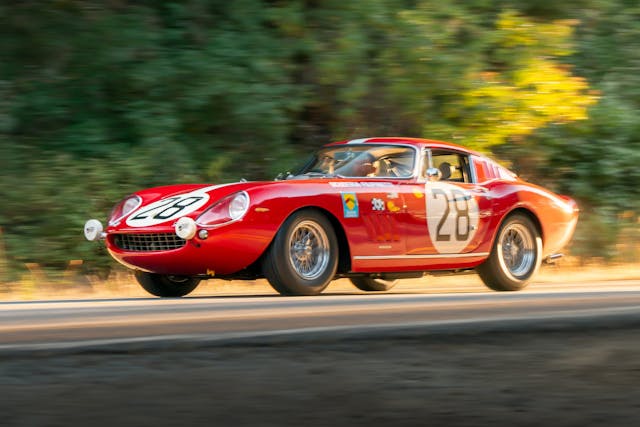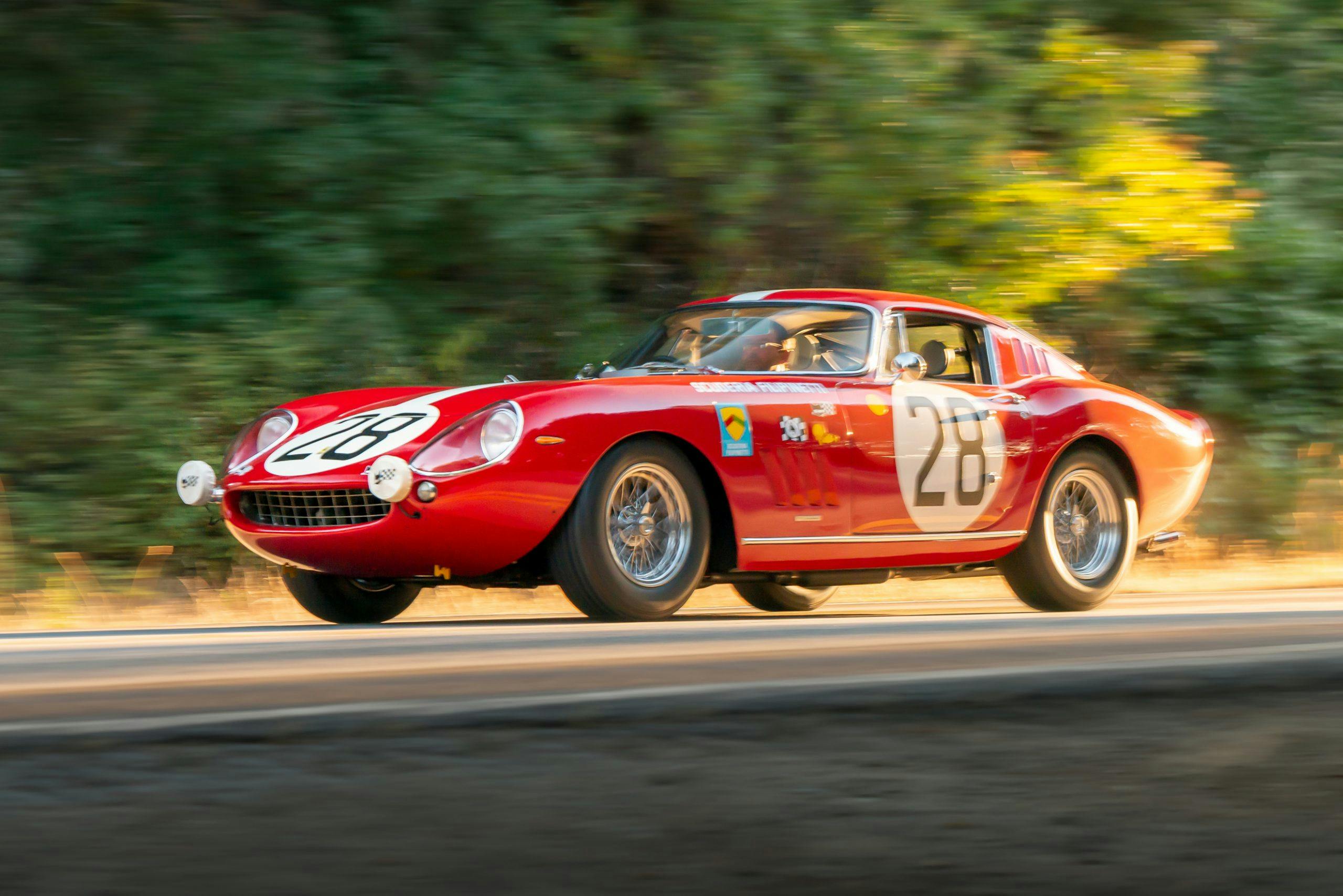Media | Articles
The 10 priciest cars bound for the block at Monterey 2021
It speaks to the number of rare and exquisite automobiles headed to Monterey Car Week that a slew of iconic vehicles don’t even rank in the top 10 highest pre-sale estimates for this year’s big auctions on the peninsula. A 1935 Duesenberg Model J Dual-Cowl Phaeton for $4 million? Nope. A 1963 Shelby 289 Cobra Works car, driven to nine podium finishes by Ken Miles and Bob Bondurant, estimated at $4.25M? Not quite. A 1958 Ferrari 250 GT Series I Cabriolet for $5.5M? Close, but no.
You’ll need a much larger bank account to swim in this end of this pool. The top 10 vehicles crossing the block in Monterey carry high estimates of at least $7 million. Sixteen cars could go for more than $5M. And an astounding 26 have high estimates of at least $4M.
“There are plenty of cars crossing the block in Monterey that are in the $1M–$5M range and would normally be headliners at any other sale, but Monterey packs in more seven- and eight-figure cars than anywhere,” says Hagerty auction editor Andrew Newton. “It takes a lot to stand out in this crowd.”
Which makes the cars on this list even more worth watching. Regardless of whether you’re a buyer, seller, or just an enthusiastic observer, it’s going to be an eventful week in California. Here are the 10 highest auction estimates during Monterey Car Week, August 13–14, listed from lowest to highest.
1955 Jaguar D-Type

Marketplace
Buy and sell classics with confidence
Estimate: $5.5M – $7M
Known as “The Ice Racer,” this is one of 54 D-Types that Jaguar built for private racers—and perhaps the only one that spent much of its competitive career wearing spiked tires and racing on ice. It’s also reportedly the only D-Type to compete in the Soviet Union. Oh, the story gets better. Jaguar connoisseur Curt Lincoln bought the car new, but to avoid paying heavy taxes in his home country of Finland, Lincoln asked Jaguar to outfit it with a visibly used steering wheel, pedals, and odometer to make it look like a used car. The D-Type—featuring original factory-upgraded 3.8-liter engine, transmission, chassis frame, monocoque body, and brake calipers—won’t get away with that ploy this time around. Eight years ago, RM sold the same Jag at Monterey for $3.9M.
1959 Ferrari 410 Superamerica Coupe Series III by Pinin Farina
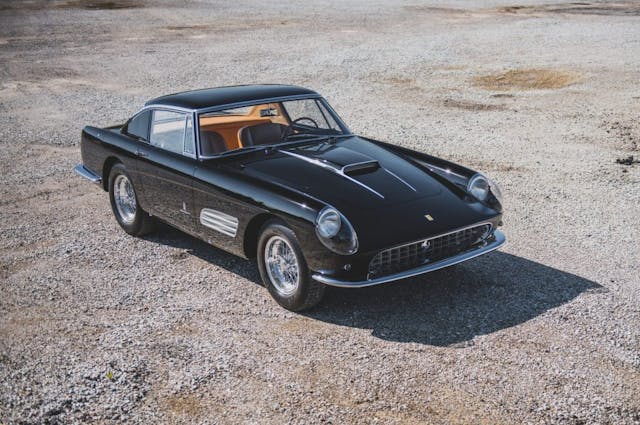
Estimate: $6M–$8M
With a shortened wheelbase and updated Pinin Farina coachwork, Ferrari’s third iteration of the 410 Superamerica Coupe offered luxury amenities and one-off design cues that mirrored the model’s advanced race-derived engineering. This one, chassis 1305 SA, is the fourth of 12 and one of only seven examples built from new with covered headlights. RM Restorations performed a meticulous overhaul from 2017–20 to return the car to its original configuration, and its re-tuned 126A/58 engine was equipped with a new head with outside spark plugs, huge Weber 36 DCF 3 carburetors, and polished billet connecting rod. Once back on the public stage, the Ferrari won a Platinum Award at the 2021 Cavallino Classic and Best in Class Award at the 2020 Amelia Island Concours d’Elegance.
1966 Ford GT40 Alan Mann Lightweight
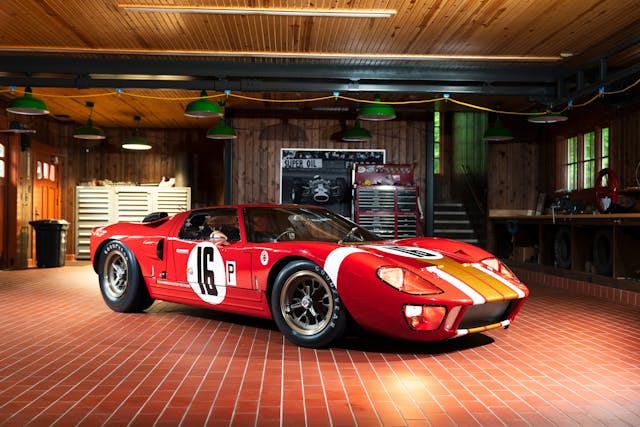
Estimate: $7M–$9M
“Ford GT40” immediately brings to mind the 1966 24 Hours of Le Mans, in which Ford’s breakthrough race car finished 1-2-3 and began a three-year championship run for the Blue Oval. To help develop the cars further, Ford contracted with Shelby American, Holman-Moody, and Alan Mann Racing, and tasked them with perfecting the GT40. This is one of those privateer cars, the first of two aluminum-bodied cars built for the Alan Mann team and the only one to survive intact. Packing a 289-cubic-inch Ford 6CFE OHV V-8 that musters 425 hp at 6000 rpm, the aluminum-bodied Mann is the rarest of all GT40s.
1966 Ferrari 275 GTB Competizione by Scaglietti
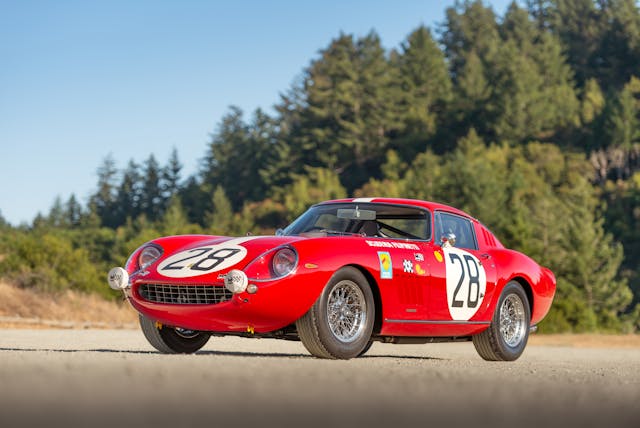
Estimate: $8M–$10M
The FIA twice denied homologation recognition for Ferrari race cars in 1964 before the prancing horse returned to the drawing board and built three Speciale 275 GTB competition examples at a compromised weight. These were finally approved, but they arrived too late in the 1965 season to do more than capture a class win at the 24 Hours of Le Mans. Happy with the car—which among its features had standard aluminum alloy coachwork and external fuel filler caps on the right rear fenders—Ferrari built 10 more for 1966. This one (chassis 09079) was campaigned by Scuderia Filipinetti, one of four factory-supported privateer teams, and won its class and finished 11th overall at Le Mans in 1967. It later won its class at the 1969 1000 KM of Spa-Francorchamps and ’69 500 KM of Imola. Restored in 2018, the Ferrari is optimized for vintage competition and would be the crown jewel of most collections.
1962 Ferrari 268 SP by Fantuzzi
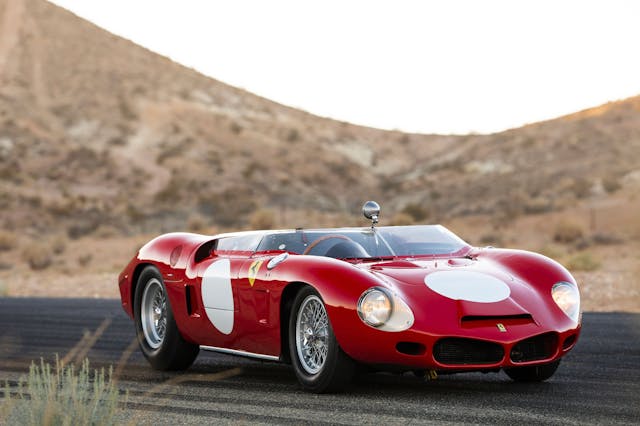
Estimate: $8M–$10M
In 1960, following the lead of Cooper and Lotus, Ferrari began to experiment with rear engine placement in its F1 and sports-racing cars. This car is the third of six rear-engine SP examples built, and—after the original 2.4-liter V-8 proved underwhelming—chassis 0798 received a larger 2.6-liter mill. The car is the only original example remaining. In addition to experimenting with the engine’s size and rear placement, the Ferrari’s design was a complete departure from prior Maranello styling. With coachwork by Fantuzzi, the race car’s new open design featured a low-rise windscreen, a delicately curved rear fenders, an aerodynamic protruding nose featuring a twin-nostril grille, and an innovative, sharp spoiler at the edge of the tail. The Ferrari competed in the 1962 24 Hours, but it failed to finish as clutch issues forced it to retire after 230 laps. Both rare and breathtakingly stylish, the 268 SP was integral to the evolution of the Ferrari P-car series.
1998 Mercedes-Benz AMG CLK GTR Strassenversion
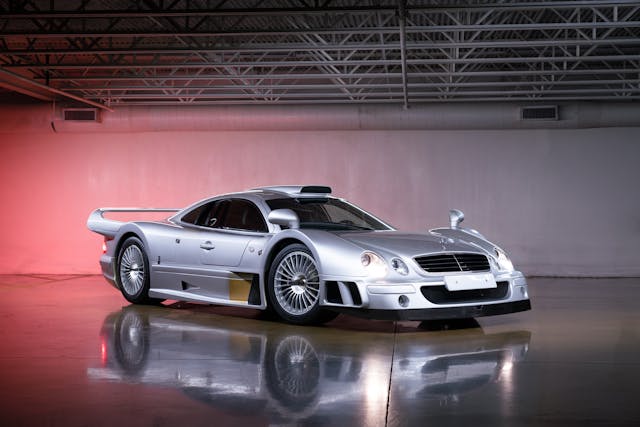
Estimate: $8.5–$11M
One of the requirements of the FIA GT series was that manufacturers were required to build no fewer than 25 road-going versions of the cars to be raced. This is one of those cars, a 1998 Mercedes-Benz AMG CLK GTR Strassenversion. The ninth of 25, the CLK GTR is based on the same architecture as the racing cars but has subtle changes to make it more roadworthy, and its 6.9-liter V-12 engine is actually larger than the race cars’ 6.0-liter powerplant. They both produce 604 horsepower. With its numerous vents, scoops, and aerodynamic touches, it is truly a race car for the street.
1959 Ferrari 250 GT LWB California Spider Competizione

Estimate: $10M–$12M
The fourth Ferrari among the top 10, this 250 GT LWB California Spider Competizione turns more heads than a chiropractor. Immediately recognizable in its tri-color livery, the sports car was aimed at the all-important North American market and was intended to be an open-air counterpart to the dual-purpose 250 GT Tour de France Berlinetta. Of the 50 LWB California Spiders built, about 10 were originally supplied with a combination of race-ready features, including this one. Powered by a 250-hp, 3.0-liter Tipo 128D SOHC V-12 engine with three Weber 36 DCL3 carbs, this stunning Italian sports car is equally at home on the street and in the paddock … if you can stop staring at it long enough to get behind the wheel.
1962 Aston Martin DB4 GT Zagato

Estimate: $11M–$14M
One of only 19 genuine DB4 GTs bodied by Zagato in period, and one of just six configured in left-hand drive, it’s no wonder that RM calls this Aston the “crown jewel of Paul Andrews’ distinguished collection,” as well as “the ultimate vintage Aston Martin, period.” The Aston was ordered new by a U.S. Navy attaché with several special features, including heavier-gauge aluminum for the bodywork, glass windows (instead of Perspex), chromed brass window frames (instead of aluminum), a unique wide-pattern egg crate grille, stacked taillights, locking glove box, and special brake covers to prevent brake dust from dirtying up its Borrani wire wheels. The Aston quickly proved itself on the track—one month before it was recorded as “completed” and delivered to its first owner. Aston Martin team driver Roy Salvadori “tested” the car in a British Racing and Sports Car Club race at Brands Hatch Circuit, placing first in class and second overall behind a Ferrari 250 GTO.
1995 McLaren F1
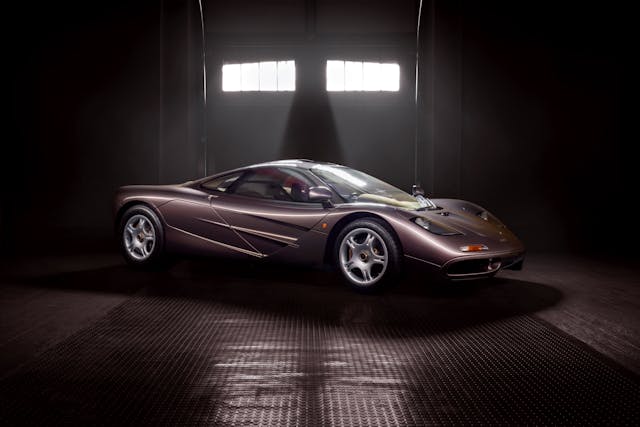
Estimate: “In excess of $15M”
Arguably the most desirable automobile built in the last 50 years, this 1995 McLaren F1 may be sitting atop the sales list when the dust clears in Monterey. One of only 106 McLaren F1s built from 1992–98, and one of only 65 three-seat models for the road, the meticulously crafted supercar features a carbon-fiber monocoque chassis and a mid-mounted, 627-horsepower, BMW Motorsport 6.1-liter V-12 engine, mated to a six-speed transaxle. And it has a miniscule 242 miles on the odometer. The F1 is expected to sell for “in excess of $15M”—which is Gooding’s way of saying there’s no firm ceiling here. For comparison, a 1994 McLaren F1 sold for $19.8M at Monterey in 2019—and it had 13,352 miles. As always, it depends on how badly potential buyers want it. We’re guessing it’ll have its share of suitors.
1970 Porsche 917K
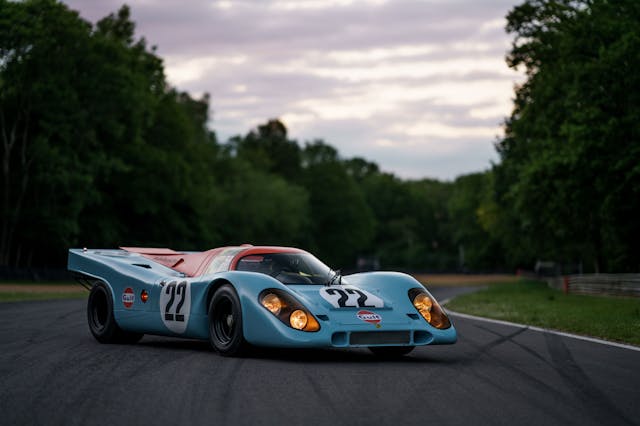
Estimate: $16M–$18.5M
We wrote a story on this 1970 Porsche 917K several months ago, and the excitement in the market since hasn’t waned. Raced at Le Mans in 1970 with John Wyer’s legendary Gulf Oil team, the 917K could become the most expensive Porsche ever sold at auction. As we wrote in May, “It’s hard to overstate the importance of the 917, both to the company that built it and to racing in general. It delivered Porsche the first of its 19 overall wins (so far) at the 24 Hours of Le Mans. It launched the company into a period of international sports car racing dominance that lasted through much of the 1970s and 1980s. It played a starring role in Steve McQueen’s 1971 film about the 24-hour classic, Le Mans. Then, the 917’s turbocharged variants (aka the “Turbo Panzers”) so thoroughly steamrolled the competition in Can-Am racing that they effectively ended the series. The 917 is also one of the cars that made both the Gulf and Martini color schemes among the most beloved color liveries in motorsport.” Drop the mic … and hold your breath. The world will be watching this one.
